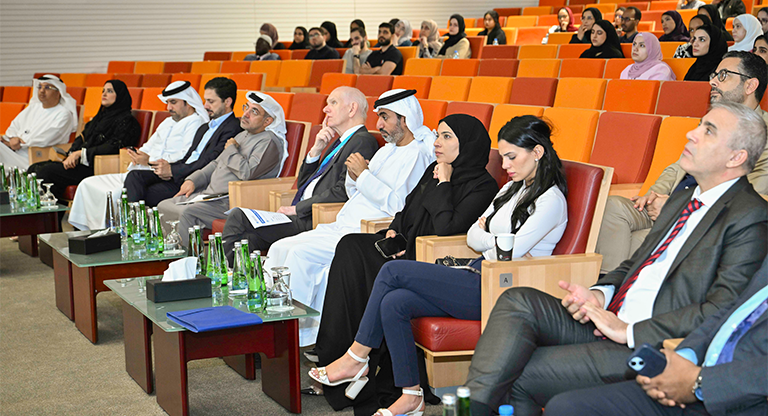
Research from Khalifa University paves the way to a more efficient future, redefining wireless communication with novel approach to network system design
The demand for quicker and more efficient wireless communication is increasing. With the rise of data-intensive applications, the traditional half-duplex systems, which either transmit or receive signals at a time, are hitting their limits. To overcome this bottleneck, research is investigating innovative technologies including full-duplex communications.
A team of researchers including Khalifa University’s Prof. Zhiguo Ding, professor of computer communication engineering, has developed a full-duplex system enhanced with reconfigurable intelligent surfaces (RISs) for maximum efficiency in the communications system. Prof. Ding collaborated with researchers from Jinan University, China; South China University of Technology; Peking University, China; University of Thessaly, Greece; and Princeton University, United States. Their results were published in IEEE Transactions on Wireless Communications, a top 1% journal.
Full-duplex communications mark a significant leap from half-duplex by enabling simultaneous sending and receiving of signals over the same frequency band. This theoretically doubles the spectral efficiency, a measure of how efficiently a limited frequency spectrum is used. However, when the outgoing signal from a transmitter drowns out the incoming signal at the receiver, a phenomenon called self-interference occurs, which has the potential to degrade communication quality if not properly addressed.
To mitigate self-interference and unlock the full potential of full-duplex communication, significant research has been directed toward self-interference cancellation techniques. These advancements have made full-duplex communications more viable, but more innovation is needed. A promising solution could be the use of reconfigurable intelligent surfaces (RISs). These are powered by advancements in micro-electrical-mechanical systems and programmable meta-materials, comprising numerous nearly passive elements that can adjust the phase of incoming signals, shaping the wireless transmission to reduce interference and improve signal quality.
Prof. Ding and the research team developed efficient algorithms that show their system’s promising improvements over traditional full- and half-duplex systems in simulations. Incorporating RIS into full-duplex communication systems has shown potential in applications from unmanned aerial vehicle-aided communications to integrated sensing. The idea is to position RISs strategically to proactively mold the wireless environment, mitigating interference and enhancing system performance. RIS deployment could reduce the need for more complex self-interference cancellation techniques and reduce the number of antennas required at base stations. This would cut down on both energy consumption and hardware costs.
The research team’s novel approach of integrating RISs into multi-cell full-duplex networks aims to maximize spectral efficiency by jointly optimizing transmission and reflection elements. Their findings show that RISs can not only alleviate interference issues but also offer a practical pathway to achieving the high-speed, efficient wireless communication needed to support our increasingly connected world.
Jade Sterling
Science Writer
5 April 2024






